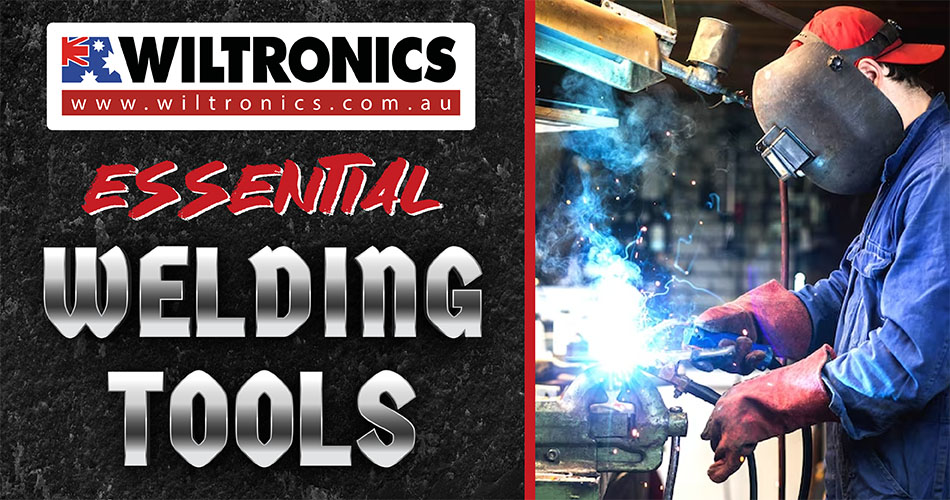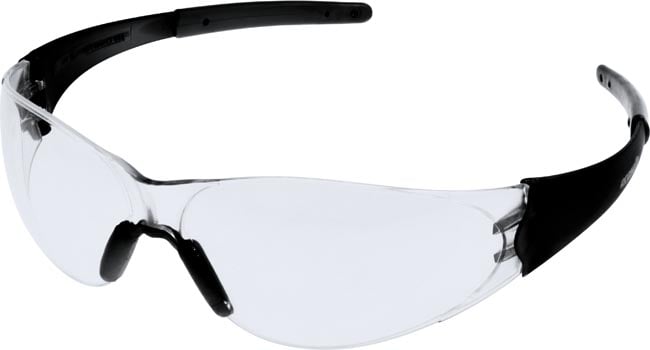Essential Welding Tools for Beginners
April 12, 2023

Welding is a highly skilled trade that requires specialised tools and equipment. As a beginner, it can be challenging to decide which welding tools are essential and which ones are not. Not to mention that investing in the wrong ones can be costly and frustrating too.
Having the right gear not only helps you achieve quality welds but also ensures your safety. To get started, you need to have a basic understanding of the must-have equipment required.
What Is Welding?
Welding is a fabrication process of joining two or more parts fused by means of heat. It is usually used on metals and thermoplastics, and also wood in other cases. The completed welded joint may be referred to as a weldment.
Welding is commonly used in construction, manufacturing, and repair work. It involves working with high temperatures, flames, and potentially hazardous materials. Thus, undertaking this job requires specialised equipment, training, and safety precautions.
In simple terms, welding joins two elements together with a firm connection.
How Does Welding Work?
The working principle of welding can depend on the material that needs to be welded. For this reason, we have categorised the methods into three types: metal, plastic, and wood.
Joining metals
As mentioned, welding is a high-heat process that melts the base material. Such temperatures cause a weld pool of molten material which cools to form the joint. This process is as opposed to soldering, which does not melt the base metal.
Joining plastics
Plastic welding also uses heat to join materials, except not in the case of solvent welding. For this method, it is achieved in three stages:
- First, the surfaces are prepared before the heat;
- Next, pressure is applied;
- Finally, the materials are left cool to create fusion.
Joining plastics can be separated into external or internal heating methods. This also depends on the exact process used.
Joining wood
Wood welding uses heat generated from friction to join materials. These materials undergo pressure before the friction creates heat and bonds the pieces. Without nails or adhesives, this process is a lot faster and can be done in a matter of seconds.
The Must-Have Welding Tools for Beginners
1. Auto-Darkening Helmet
The welding helmet is a staple piece and a safety necessity for the craft. Wearing one helps prevent sparks and flames from scarring the face. At the same time, it protects the eyes and the skin from heat.
The auto-darkening feature doubles the eye protection from harsh lights. Moreover, the glass covering the eyes is shaded to only allow a certain amount of light through at a time. This allows you to see without damaging your eyes.
2. Safety Glasses
In times when you do not have your welding helmet on, safety glasses come in handy. A reliable pair is perfect to shift from a bulky and heavy helmet while working!
Safety glasses are made from durable plastic. They provide just the right amount of eye protection from sparks. For instance, an angle grinder flying. Have a look at this safety glass with a wrap-around design below:

Safety Glasses with Wrap-Around Design – Prosafe Checkmate CK2
Product code: LS0515
These Prosafe Checkmate CK2 safety glasses provide increased levels of comfort and safety. It features a Duramass AF anti-fog lens, soft non-slip gel nose and temple inserts. Designed for precise ocular cover.
Note: Disinfecting after use is also important. Here are some sanitation tips for eye protection.
3. Welding Gloves
Although not completely ‘welding tools’, the gloves are self-explanatory. Welding gloves consist of layers of robust fabrics and insulation. Like helmets and glasses, they prevent injuries from heat and stray sparks – but for the hands.
They are essential to any form of welding you might do. And when shopping for a pair, make sure you have the right gloves (and fit) for the job.
There are thicker gloves with padding on the back. Such a design protects your resting hand while bracing the dominant hand during a weld. Meanwhile, there are thinner and softer gloves where precision is vital.
4. G Clamps (or C Clamps)
A G clamp is a metal fastening device that joins two or more workpieces together. It comprises two main parts: the fixed jaw and the screw mechanism.
This clamp allows for a greater amount of pressure. As a result, it offers a much more solid hold on whatever you need to clamp.
A C clamp also has two main parts: a fixed jaw and a movable jaw. The movable jaw can be adjusted to fit the relevant workpieces.
Both the G and C clamps are excellent welding tools to have. But they are also very common for a wide variety of hardware projects.
Learn more about the functions of G clamps & other types of clamps next!
5. MIG Welding Pliers
If you are a MIG (Metal Inert Gas) welder, you need a good set of reliable MIG pliers in your toolbox. With these welding tools, you can remove the nozzle and remove the weld spatter with ease.
Other uses include loosening and tightening the contact tip and cutting 1/4″ stick-out.
6. Welding Magnets
Welding magnets, a.k.a. magnetic clamps, are great companions for the G/C clamps. These welding holders are used to secure steel objects in position temporarily. They also offer a quick and secure solution for holding workpieces in place.
7. Wire Brush
A metal brush is something you do not think about often but constantly use while welding. A wire or metal brush removes slag and charring from the top of cooled welds. This tool is also responsible for ensuring the whole thing looks nice and clean.
Although not every welding process creates slag, a brush may come in handy. This is especially true for ones that do require both chipping hammers and wire brushes to do the work.
Note: Chipping hammers are not used so often, but they also make welding much cleaner and more doable.
8. Angle Grinder
An angle grinder is for those who weld regularly. This handy tool can easily cut metal stock and is useful for preparing metal before welding. It is also great for cleaning and finishing welds, e.g. getting rid of leftover slags. And if you need to polish up your work, an angle grinder can do that too!
9. Sheet Metal Gauge
Gauges are used to specify the thickness of sheet metal – and to weld effectively, you will need one. This measuring tool comes in a wheel form with teeth spaced different widths apart. The design corresponds to sheet metal’s various standard widths.
Knowing how thick the sheet metal you will be working with can be helpful. After all, it can be hard to distinguish one piece of sheet metal from another just by looking at it.
10. Welding Cart
If you do not want to sniff around and look for certain tools while working, get everything you need in a cart. The welding cart, although it is less of a tool, lets you store and move the various welding tools and materials. Some welding carts have toolboxes attached to them, offering extra storage space.
The Bottom Line
If you are ready to become a welder, you need to have these welding tools, besides learning how to weld, of course. These items will be of great use as you learn to do the craft safely and effectively, nevertheless. Most of them are practical investments that you will be using for years to come.
© Wiltronics Research Pty Ltd 2023
Write a Comment
You must be logged in to post a comment.